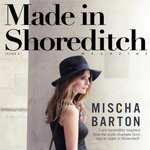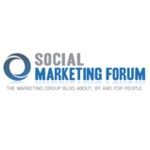 Will Long currently works as a Freelance Community Manager across a range of clients. He started his career in PR, working for a number of music clients before progressing to work on the Virgin Media and Sony accounts at Mark Borkowski’s agency in London. You can follow Will on his blog, Twitter and LinkedIn.
Will Long currently works as a Freelance Community Manager across a range of clients. He started his career in PR, working for a number of music clients before progressing to work on the Virgin Media and Sony accounts at Mark Borkowski’s agency in London. You can follow Will on his blog, Twitter and LinkedIn.
G: How did you build your experience as community manager?
W: I started out working in PR. Initially through music then on to consumer brands such as Sony and Virgin Media. I’d always had an eye on Social Media, managing communities at uni and for other project I was involved in. I worked on a few Social projects in my last PR job and began seeing the benefits more and more compared to what I was doing. The opportunity cam up to become a Community Manager and I took it, now I’ve just turned Freelance.
G: What are your top resources for community management ?
W: For me, I can’t live without Hootsuite. Whether it’s using the geo-search option or simply scheduling content, it’s become a tool I’m familiar with, so I guess I rely on it. I’ve just got in to Buffer as well, it’s a fantastic app/plug-in that allows you to line up tweets and the click of a button – been waiting for something like this for years! People-wise, I’m a big Gary Vaynerchuk fan. Yeah, he’s excitable and over the top but what he says really resonates with me. I always keep an eye of Edelman Digital’s blog too, just seems to have good content for CMs. Keep an on the #CmgrChat hashtag on Twitter too, always interesting.
G: Who are your favourite community managers or community management case studies?
W: There’s so many Community Managers doing a good job it’s hard to pick one. I love Skittles Facebook Page for it’s pure randomness, which always gets good engagement. Same for Dr Pepper and Oreo – who have a good range of content. One of the best in the country at the minute is Manchester City Football Club; they have a stream of original content and place the Page as a fan, rather than the club. It’s one of the best examples at the moment, in my opinion. My favourite example of a campaign recently is Adidas Originals at Christmas. Through an app, you could apply for Snoop Dogg to leave a friend a Christmas message… I did it and I worked. Snoop recorded “Merry Christmas to Ben” for my mate. The app was great because it shared to all your friends on several occasions and the element of surprise really worked.
G: Where is the best place to build the community?
W: Each community is different and each social network is different so it really depends on your needs. I think Facebook is a great place to start if you’re B2C, the stats speak for themselves. It’s not worth trying to reinvent the wheel, the platform is there so go to the masses rather than trying to get the masses to you. Tumblr for me is the number one blogging platform if your brand is more niche – fashion, art, media, design etc – and you can build a vibrant community there. Pinterest is going from strength to strength, if you’re in retail I’d head there quickly. Twitter brings something else to the table, so it all depends on what type of community you want to build and your objectives.
G: What do you have to provide the community to make it work?
W: An engaging platform. A platform for open, meaningful discussion, original and exclusive content and a reason to return. This can be done in multiple ways from incentivisation (money off vouchers or contests) to exclusive photos/videos, for example. First and foremost you need to put your community first and get inside their minds. If they don’t like what you’re doing, they won’t come back – so give them a reason too.
G: What kinds of content do you share and post most often on the community platform?
W: Visual content tends to work the best. Images or graphics are easy to dissect and process so it’s worth investing in those – they also score high for Edgerank, Facebook’s algorithm. Videos are also sharable but they need a hook, that’s where your wit as a CM comes in – well, I hope I have some anyway!
G: Does the size matter?
W: Numbers in communities aren’t really relevant, as long as we’re not talking one or two people. How engaged is your community is the real gage for success. You could have a huge community and not anyone talking about you – so it’s pointless. Alternatively, you could have a small to medium sized community – say 1,000-5,000 fans – and have more people discussing the brand. Subsequently the reach is far greater. Aim for engagement, as engagement will bring growth anyway.
G:What are the most common mistakes in community management? What should companies do to avoid them?
W: Bad hashtags. A pet hate. Research your hashtags and think about why you’re using them… to get exposure right? Unless you’re grouping a custom made conversation, make sure your hashtags are regularly used and aren’t full of spam – just by clicking on them. Another is links, mainly on Facebook and Twitter. Make the user experience as frictonless as possible, don’t put “to see our store click on the tab on the left hand side below the profile pic within the menu blah blah” – use a link to direct your fans otherwise they might get bored and leave.
G: Do you have any social media crisis management experience? If yes, what is the best way to approach the problem?
W: Things can escalate pretty quickly in communities so it’s worth having your community guidelines in place from the start. Create a set of rule and regulations and host them somewhere your community can refer to. In the event of a crisis any breaches of policy can be dealt with and refer to the guidelines. If a crisis occurs, take 15 minutes to listen. Identify the “haters” and identify the “lovers”, if there is any! Once you know the problem, think of a solution to stem the flow. My experience led to a live Q&A with the CEO of the company on Facebook. It didn’t work… but it did show we cared and were listening. We then identified the “haters” who were rational and engaged in conversation, giving them a sounding board and allowing them to have their say. We also identified the “lovers” and encourage as much conversation as possible. Whereas as before the “lovers” felt overwhelmed by the “haters”, a shift started to occur and other fans began to speak up. Those who broke guidelines has comments removed or were banned from the Page – I must add that banning is a massive last resort but persistent swearing or abuse must be dealt with to protect your community.
G: How do you measure the ROI of your community?
W: Engagement, “people talking about” or reach – seeing as our business is essentially friend to friend marketing. You’ll always need number of fans or followers to keep clients happy but engagement will draw more people to your community. Services such as Klout are great to quantify your Social activity into one figure – I really feel analytics should be made as simple to understand as possible for clients. At the end of the day, if you’re doing your job right the numbers will speak for themselves.








Recent Comments